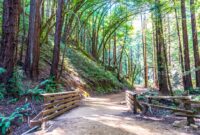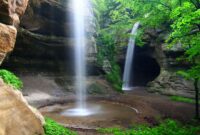Pretty hiking trails near me—the very phrase evokes images of sun-dappled paths, breathtaking vistas, and invigorating adventures. Whether you’re an experienced hiker seeking a challenging ascent or a family looking for a leisurely stroll, finding the perfect trail requires careful consideration. This guide explores the factors influencing trail selection, providing resources and strategies to help you discover and enjoy the most beautiful hiking trails in your vicinity. We’ll delve into the various user needs, from scenic preferences to difficulty levels, ensuring you find a hike that perfectly matches your experience and expectations.
From utilizing online tools and map applications to understanding trail descriptions and safety considerations, we aim to equip you with the knowledge and tools necessary for a successful and memorable hiking experience. We’ll cover practical aspects like essential gear and trail etiquette, ensuring your adventure is both enjoyable and safe. Ultimately, the goal is to help you uncover hidden gems and appreciate the natural beauty that awaits just a short distance from your doorstep.
Understanding User Intent Behind “Pretty Hiking Trails Near Me”
The search phrase “pretty hiking trails near me” reveals a desire for visually appealing outdoor recreation, but the specific needs and preferences vary significantly depending on the user. Understanding these nuances is crucial for providing relevant and satisfying search results. Different user types approach this search with different priorities, ranging from the scenic beauty of the trail itself to the difficulty of the hike.
The implied needs and desires are closely tied to the user’s experience level, fitness goals, and the company they plan to bring along. This section will explore the varying motivations behind this seemingly simple search query.
User Segmentation and Preferences
Different user types approach the search for “pretty hiking trails near me” with distinct priorities. Experienced hikers might prioritize challenging terrain and less-traveled paths, while families may seek shorter, easier trails with scenic overlooks. Beginners will focus on safety, accessibility, and shorter distances.
Several factors heavily influence their trail selection. These include the overall distance of the trail, the level of difficulty (elevation gain, terrain type), the type of scenery (forests, mountains, lakes), the presence of amenities (parking, restrooms), and even the level of crowd density. The interplay of these factors dictates the user’s final choice.
Comparative Analysis of User Preferences
| User Type | Distance Preference | Difficulty Preference | Scenery Preference |
|---|---|---|---|
| Experienced Hikers | 10+ miles; multi-day treks | Challenging; steep inclines, varied terrain | Panoramic views; remote, wilderness areas; unique geological formations |
| Families with Young Children | 1-3 miles; loop trails | Easy; minimal elevation gain, well-maintained paths | Scenic overlooks; easily accessible viewpoints; areas with wildlife viewing opportunities |
| Beginner Hikers | Less than 5 miles; flat or gently sloping terrain | Easy to Moderate; well-marked trails, minimal elevation change | Well-maintained trails with pleasant views; forests, meadows, or water features |
| Couples/Friends | Variable; depending on fitness level and time available | Variable; can range from easy to challenging depending on group preferences | Scenic beauty; romantic settings; opportunities for photography; secluded areas for peaceful moments. |
Presenting Trail Information in a User-Friendly Format
Presenting trail information effectively hinges on clarity, conciseness, and visual appeal. Users need quick access to key details to decide if a trail suits their preferences and abilities. A well-structured presentation enhances the user experience and encourages exploration.
Effective structuring of trail information prioritizes accessibility and readability. Essential details should be prominently displayed, followed by supplementary information. This allows users to quickly scan for relevant details before diving into more in-depth descriptions.
Trail Description Structure
A well-structured trail description begins with a concise overview, highlighting key features such as difficulty level, distance, and estimated time. This is followed by a more detailed description, incorporating sensory details to enhance the user’s understanding of the trail experience. Finally, practical information such as parking, accessibility, and permits should be included.
Example: The Whispering Pines Trail is a moderate 5-mile loop, taking approximately 2-3 hours to complete. It features gentle inclines and stunning views of the valley below.
Example: The Sunstone Ridge Trail, a challenging 8-mile out-and-back trail, offers breathtaking panoramic views from its rocky summit. Allow 4-6 hours for completion. Steep sections and rocky terrain require appropriate footwear.
Sensory Details in Trail Descriptions
Incorporating sensory details significantly enhances the user experience. Instead of simply stating that a trail is “beautiful,” describe the vibrant hues of wildflowers carpeting the meadow floor, the rustling of leaves underfoot, or the refreshing scent of pine needles.
Example: Imagine walking through a forest bathed in the golden light of the setting sun. The air is filled with the sweet fragrance of blooming honeysuckle, and the path, a carpet of soft pine needles, cushions each step. The gentle murmur of a nearby stream provides a soothing soundtrack to your hike.
Example: The trail ascends through a canyon carved from fiery red sandstone. The rough texture of the rock contrasts with the smooth, cool surface of the stream bed. The distant caw of a raven echoes across the silent landscape.
Comparing Methods of Presenting Trail Information
Text-based descriptions, though essential, can be complemented by other methods for a richer user experience. Maps provide a visual representation of the trail’s route, elevation changes, and key landmarks. Images capture the trail’s visual appeal, showcasing scenic vistas and unique features. However, text remains crucial for conveying details that are difficult to capture visually, such as the trail’s texture, sounds, and overall atmosphere. A balanced approach combining text, maps, and images provides the most comprehensive and engaging experience.
Closing Summary
Discovering the perfect pretty hiking trail near you is a journey of exploration and discovery. By understanding your preferences, utilizing available resources, and prioritizing safety, you can unlock a world of outdoor adventure. Remember to always respect the environment, plan your hike carefully, and enjoy the stunning scenery that awaits. The beauty of nature is a gift to be cherished, and with a little planning, you can experience it firsthand on a trail perfectly suited to your needs and desires.




